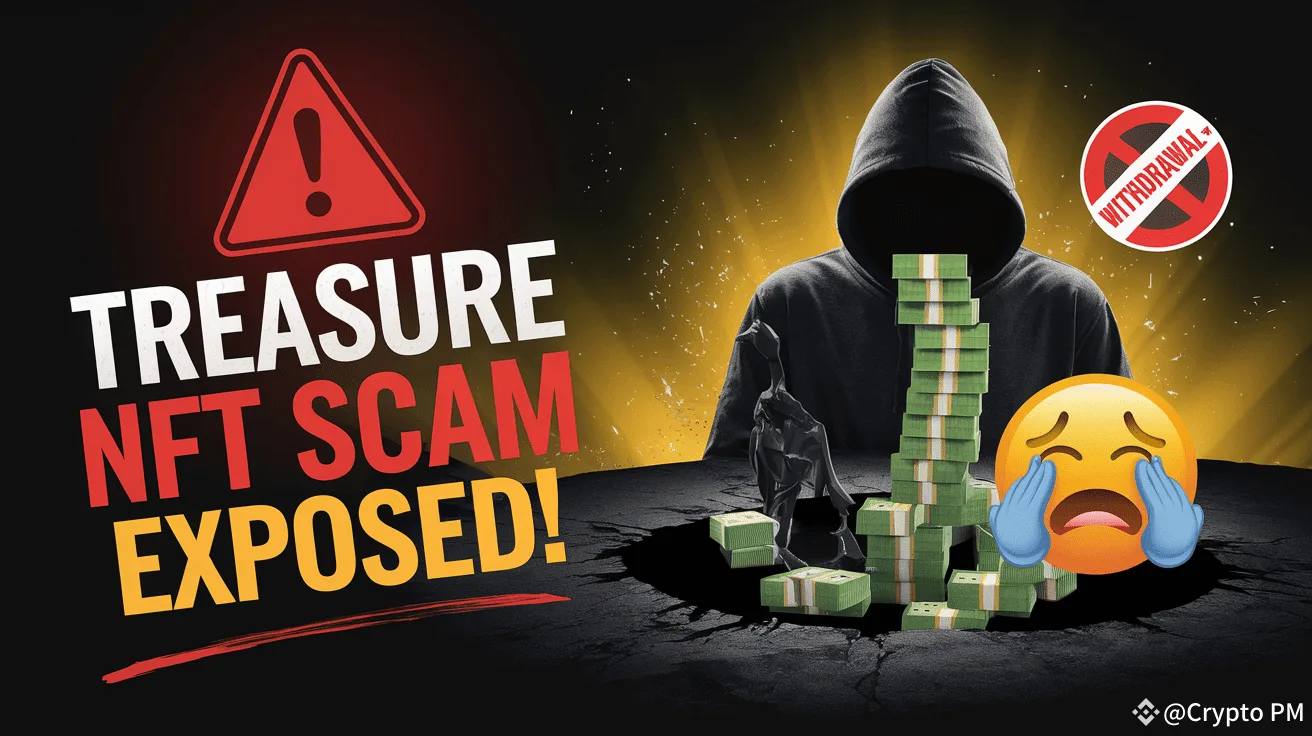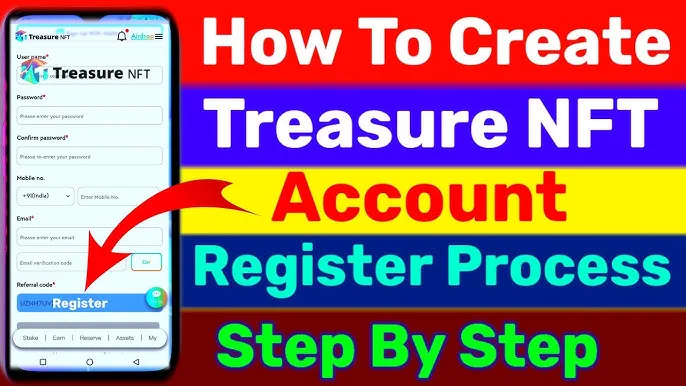Treasure NFT Exposed The Shocking Truth Behind the Ponzi Scheme
Treasure NFT Exposed The Shocking Truth Behind the Ponzi Scheme, The NFT market has revolutionized digital ownership, creating new opportunities for artists and investors alike. But where there’s innovation, there are also scams—and Treasure NFT is one of the most dangerous Ponzi schemes masquerading as a legitimate platform.
Promising daily returns of 4.3% to 6.8% and monthly profits up to 30%, Treasure NFT lures unsuspecting investors with the illusion of easy wealth. But beneath its flashy promises lies a fraudulent operation designed to siphon money from new victims while paying off early adopters—until it inevitably collapses.
Here’s a deep dive into why Treasure NFT is a scam and how you can protect yourself from similar schemes.
What is Treasure NFT? (And Why It’s a Scam)
Treasure NFT claims to be a decentralized NFT trading platform powered by AI-driven algorithms that generate passive income. Unlike legitimate NFT marketplaces (like OpenSea or Rarible), Treasure NFT doesn’t focus on actual NFT trading—instead, it operates like a classic Ponzi scheme, relying on new investors to pay old ones.
7 Red Flags That Prove Treasure NFT is a Scam
- Unrealistic Profit Guarantees
- No legitimate investment offers fixed daily returns (4.3%–6.8%).
- If it sounds too good to be true, it is.
- No Transparency About Founders or AI Tech
- No verifiable team, no whitepaper, no proof of AI trading.
- Just vague buzzwords like “Web3” and “blockchain” to sound credible.
- Referral-Based Earnings (Pyramid Scheme Structure)
- The biggest payouts come from recruiting new users, not actual NFT trading.
- Classic Ponzi behavior—profits rely on new money, not real revenue.
- Withdrawal Issues & Frozen Accounts
- Multiple reports of blocked withdrawals and sudden account freezes.
- Scam platforms let you deposit but make it impossible to cash out.
- Fake Reviews & Manipulated Trust Signals
- Suspiciously glowing reviews on Trustpilot from new accounts.
- Real users report lost funds and ignored complaints.
- No Customer Support
- Zero response to withdrawal requests or account issues.
- A legitimate business would prioritize user support.
- Regulatory Warnings & Legal Troubles
- Authorities in India and West Bengal have flagged Treasure NFT as a potential scam.
- Their FinCEN MSB license is meaningless—it doesn’t validate their business model.

How the Treasure NFT Scam Works (Ponzi Scheme Breakdown)
- Step 1: Lure Investors with High Returns
- Promise 4.3%–6.8% daily profits to attract desperate or greedy investors.
- Step 2: Pay Early Users to Build Trust
- Initial investors get small payouts to convince others it’s legit.
- Step 3: Push Referrals to Sustain Cash Flow
- The only way to keep the scheme alive is by recruiting new victims.
- Step 4: Block Withdrawals When Recruitment Slows
- Once new money stops coming in, withdrawals get delayed or denied.
- Step 5: Disappear with the Money
- The founders vanish, leaving thousands of investors with nothing.
Real Victims, Real Losses
- One user lost $5,000 after being locked out of their account.
- Families were tricked into recruiting relatives, only to lose everything.
- No refunds, no explanations—just silence from the “support” team.

How to Avoid NFT Scams (Protect Yourself!)
- Never Trust Guaranteed Returns – Real investments carry risk.
- Research the Team & Whitepaper – No team = red flag.
- Test Small Withdrawals First – If you can’t cash out, it’s a scam.
- Avoid Referral-Heavy Platforms – Ponzi schemes rely on recruitment.
- Stick to Reputable Marketplaces – Use OpenSea, Rarible, or Magic Eden.
Final Verdict: Treasure NFT is a SCAM
Treasure NFT follows the exact playbook of a Ponzi scheme—fake profits, fake AI, and real theft. If you’ve invested, stop putting in more money and try to withdraw what you can.
For legitimate NFT investments, stick to trusted platforms with real liquidity and transparency.
Stay safe—don’t become the next victim!
Share this to warn others! #NFTScam #CryptoFraud #PonziScheme





